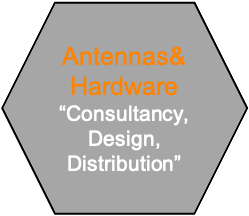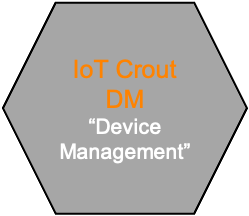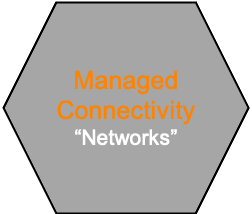
For years, I have been receiving requests for small, cellular devices the size of a matchbox or a wristwatch. To minimise the flood of requests from desperate IoT developers, I’m disclosing the secret in this blog: wireless devices are made smaller by doing away with the annoying, expensive antennas! Each chip antenna or Flex PCP antenna drives up costs and takes up space. Small devices such as wristwatches, tracking devices for dogs or even the Apple Air Tag use LDS.
Laser Direct Structuring (LDS) is a process by which an antenna can be applied three-dimensionally to a plastic carrier. This carrier can be a separate plastic part or an existing integral part of the enclosure. The advantages are low tooling costs, quick layout changes and very fine structures. The plastic parts are solderable. LDS is not science fiction. The world’s leading manufacturer for LDS develops and produces its machines 30 minutes away from my office in the neighbouring town of Garbsen.
Table of contents
- Apple Air Tag with LDS
- LDS demonstrator from 2012
- An emergency button on NB-IoT and LTE-M and antenna by LDS
Apple Air Tag with LDS

One of the best-known devices with antennas based on LDS is the Apple AirTag. In this innovative IoT device, the Bluetooth antenna and the U BB antenna were printed on the outer edge of the plastic enclosure. The NFC antenna was also applied to the enclosure using LDS. The inner workings of the device were revealed by Adam Catley via reengineering: https://adamcatley.com/AirTag.html
LDS demonstrator from 2012

To demonstrate the possibilities of LDS, the enclosure in the photo in 2012 was printed with a few tracks and antennas. What impresses the world today in the Apple Tag was possible ten years ago. At that time, it was still possible to have prototypes printed with LDS in Garbsen. The machines have since been sold to a company in the south of Germany. It is still possible to have prototypes printed there using LDS. Original post: http://www.gsm-modem.de/M2M/m2m-componets/do-not-buy-antennas-just-print-it/
An emergency button on NB-IoT and LTE-M and antenna by LDS

The akorIoT Group has a development team with many years of experience in wireless data transmission which today is termed “Wireless IoT”. The integration of antennas into enclosures is another area of expertise for the team; in addition to standard antennas such as solderable chip antennas or flex PCB antennas, customer-specific antennas are often used in their designs.
The akorIoT Group also counts within its software development team experts in MCU firmware, smartphone apps or web-based applications. Product designers are also represented.

They asked designer Thomas Klimek to develop an enclosure concept for an IoT button. The Amazon Dash button and the NB-IoT button from Deutsche Telekom were provided as examples of IoT buttons, these two buttons are very similar in shape. An additional button from Finland called “BTTN” was also provided.

The most challenging example was the button for Gillette for ordering razor blades. No specifications existed. So he was free to imagine the new product with one button, several buttons in a circular, rectangular or triangular housing. Thomas Klimek was at liberty to give free thought to his creative ideas.
Creative ideas of a designer with experience in wireless IoT products
The result after a few days’ work was impressive. In the first iteration, two different IoT devices were created, each with a push-button for operation. One of the two devices is portable and has a belt clip.
In the first design step, hand sketches are made. After review, these are then converted into software 3D models. These models can be further processed and also printed in 3D. Since the designer has experience from other joint wireless projects and builds radio-controlled drones himself, he understands battery and antenna design. Antennas and batteries require installation space and their requirements must be considered during the design phase.
The rounded shapes in the designs lead to a loss of installation space for the battery which is generally square. Other shapes for batteries are possible but lead to high tooling costs. Not all shapes can accept batteries. The two designs create unused installation space in the enclosure. A problem often arises when the design is ignorant of the optimum installation space. For consumer products, on the other hand, look and feel are important. A compromise must be found between design and optimal technical implementation.
Development of the antenna concept for the emergency button
Due to the many round edges, a customer-specific antenna is necessary. Square chip antennas for NB-IoT and LTE-M do not fit into the round shape of the enclosure. The antenna is best integrated into the plastic enclosure as a Flex PCB or by Laser direct structuring (LDS). For initial tests, the enclosure itself can be coated and the antenna structure worked out. Once the antenna concept has been clarified, the metallization of the inner surface of the enclosure shell is ordered and the desired antenna structure is scratched into the metal surface by hand. Once the structure has been worked out, it can be transferred to the inside of the housing shell. The advantage is clear – there are no tooling costs, and the antenna structure can also be adapted in later stages of product development without major costs.
Size of the device and technical feasibility of the cellular antenna
The antenna system consists of the enclosure, antenna and surface of the circuit boards. What we “see” as an antenna is only half the truth. Dipole antennas have two antenna segments (We know are familiar with this from traditional V-shaped television antennas). Monopoles have the second segment of the antenna located in the ground plane. The size of the ground plane in a monopole antenna therefore cannot be reduced at random to accommodate the cosmetic design. In addition, the distance between the antenna structure and the ground plane cannot be reduced to any arbitrary level. Sometimes a few millimetres distance between the antenna and the ground plane affects whether the antenna will function or not. Nobody can cheat physics. The battery or even a display will also strongly influence the construction of the customer-specific antenna. The first step is to develop such an IoT device on an almost empty PCB with the selected antenna, battery, display and other components in the electrical field of the antenna. Only when the concept has been successfully tested can the development of the complete PCB begin. The almost empty PCB can also contain wireless modules. These are then controlled with USB cables from the PC. If the return loss is good, this does not mean that the antenna really radiates the power. The radiated power must be carefully measured in all three axes.
GNSS and BLE antenna
Integrating GNSS and BLE antennas into an IoT button is straightforward. Both can be designed as ceramic chip antennas. They can also be printed by LDS into the housing or designed as a Flex-PCB. The GNSS antenna can be integrated into the cellular antenna. If the wireless module transmits with 23 dBm, GNSS receiving is not possible. A switch between GNSS and cellular operation can be used.







